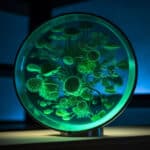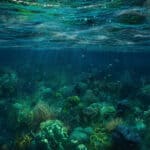Phytoplankton, the microscopic plants that inhabit the world’s oceans, play a crucial role in the Earth’s ecosystem. These tiny organisms are responsible for producing half of the planet’s oxygen and form the base of the marine food chain. Understanding the lifespan of phytoplankton is essential for comprehending their impact on the environment and their ability to respond to changing conditions. In this article, we will delve into the fascinating world of phytoplankton and explore the factors that influence their lifespan, including environmental conditions, nutrient availability, and predation. So, let’s dive in and discover the intricate life cycle of these vital marine organisms.
Key Takeaways
- Phytoplankton have a relatively short lifespan, typically ranging from a few days to a few weeks.
- Environmental factors such as nutrient availability, temperature, and light intensity can influence the lifespan of phytoplankton.
- The lifespan of phytoplankton plays a crucial role in marine ecosystems as they are the primary producers and form the base of the food chain.
- Changes in phytoplankton lifespan can have significant impacts on marine biodiversity and ecosystem dynamics.
- Understanding the factors that control the lifespan of phytoplankton is essential for predicting and managing the health of marine ecosystems.
Understanding Phytoplankton: A Brief Overview
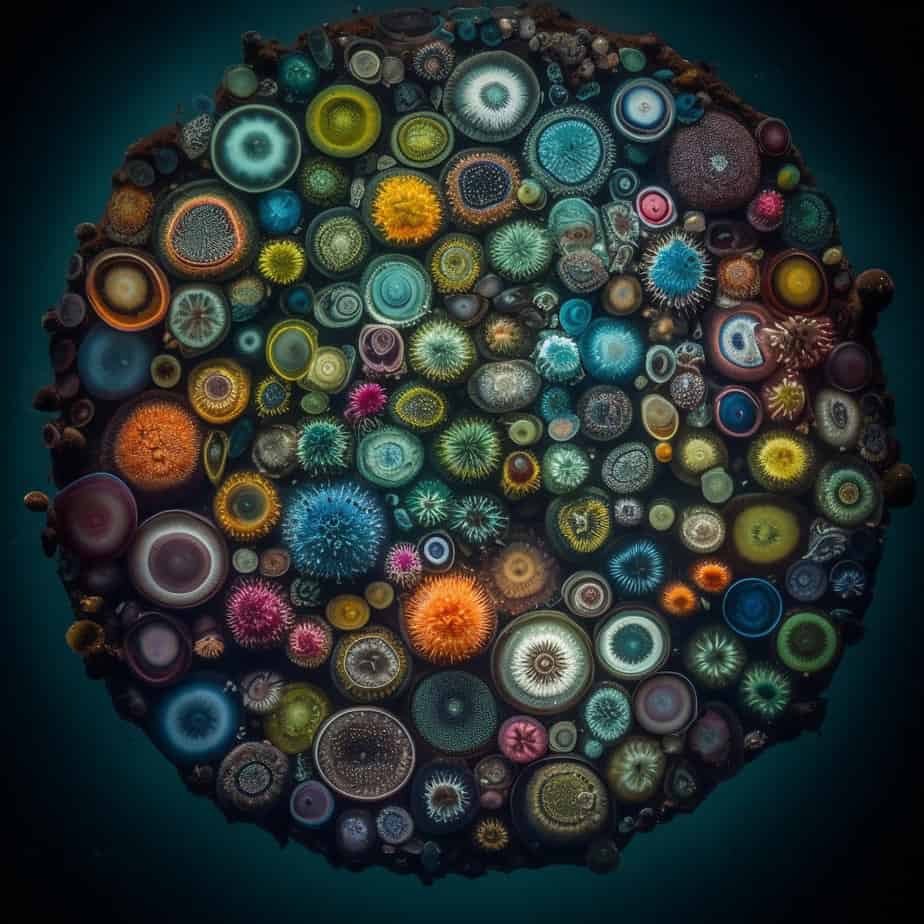
A. What are Phytoplankton?
Phytoplankton are microscopic, photosynthetic organisms that play a crucial role in aquatic ecosystems. These tiny organisms, often referred to as microalgae, are the foundation of the oceanic food chain and are responsible for producing approximately half of the world’s oxygen. Despite their small size, phytoplankton have a significant impact on the health and balance of our planet’s oceans.
Phytoplankton come in various shapes and sizes, with the most common types being diatoms, dinoflagellates, and cyanobacteria. Diatoms, for example, are characterized by their intricate glass-like shells, while dinoflagellates possess whip-like appendages called flagella that allow them to move through the water. Cyanobacteria, on the other hand, are known for their ability to convert nitrogen gas into a form that other organisms can use.
B. Where do Phytoplankton Live?
Phytoplankton can be found in both freshwater and marine environments. In the ocean, they are particularly abundant in areas where sunlight and nutrients are plentiful. These microscopic organisms thrive near the surface of the water, as they require sunlight for photosynthesis. As a result, phytoplankton are most commonly found in the upper layer of the ocean, known as the euphotic zone.
The distribution of phytoplankton is influenced by various factors, including temperature, nutrient availability, and ocean currents. Nutrients such as nitrogen, phosphorus, and iron are essential for their growth and productivity. When these nutrients are abundant, phytoplankton populations can increase rapidly, leading to what is known as a phytoplankton bloom.
C. Phytoplankton in Ocean Life
Phytoplankton play a vital role in the oceanic food chain. They serve as the primary producers, converting sunlight and nutrients into organic matter through photosynthesis. This organic matter then becomes a source of food for other organisms, such as zooplankton, small fish, and even larger marine animals.
Zooplankton, which includes tiny animals like krill and copepods, feed on phytoplankton. They, in turn, become food for larger predators like fish, whales, and seabirds. This interconnected web of life relies heavily on the abundance and productivity of phytoplankton.
The lifespan of phytoplankton varies depending on the species and environmental conditions. Some species, like diatoms, can live for several weeks, while others may only survive for a few days. Reproduction in phytoplankton can occur through asexual cell division or sexual reproduction, allowing them to adapt and thrive in different environments.
However, phytoplankton populations are not without challenges. Factors such as predation, nutrient availability, and changes in environmental conditions can impact their growth and survival. Climate change, for example, can alter ocean temperatures and nutrient availability, affecting the distribution and productivity of phytoplankton.
Understanding the lifespan and dynamics of phytoplankton is crucial for studying the health of our oceans and predicting the impacts of climate change. Scientists and researchers continue to study these fascinating organisms to gain insights into their role in the carbon cycle, their response to environmental changes, and their overall contribution to the delicate balance of marine ecosystems.
The Life Cycle of Phytoplankton
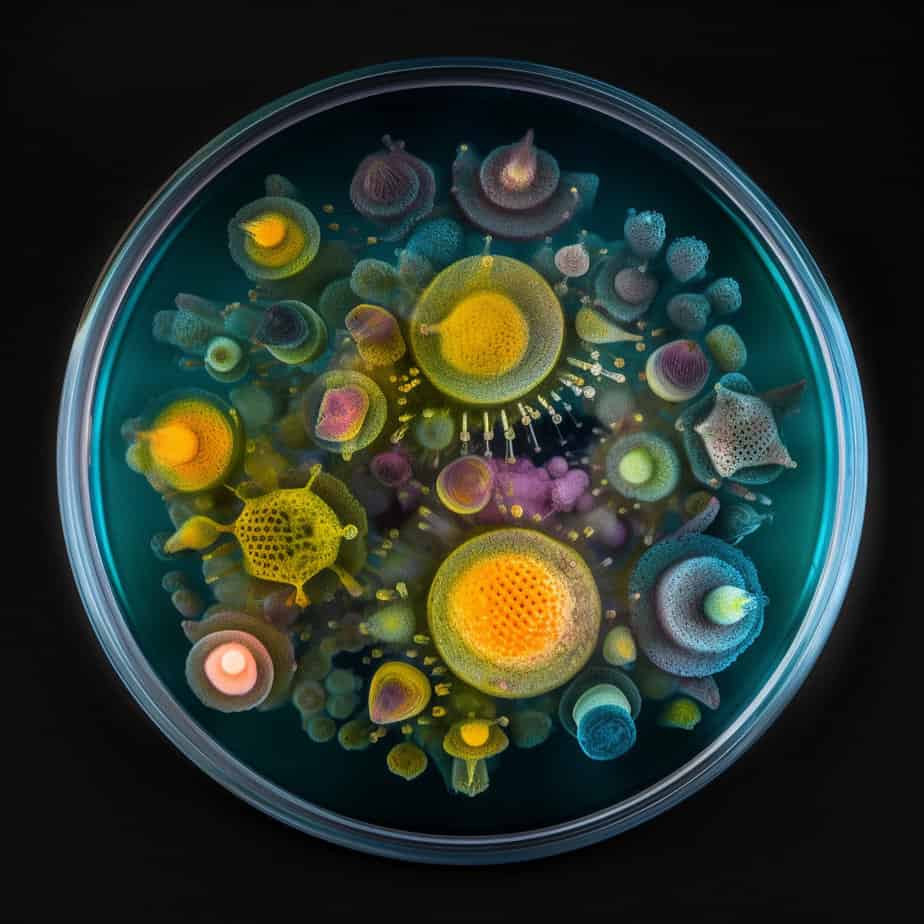
Phytoplankton, the tiny photosynthetic organisms that inhabit aquatic ecosystems, play a crucial role in the marine food chain and the overall health of our oceans. Understanding the lifespan of phytoplankton is essential for comprehending their population dynamics and the impact they have on the environment. In this section, we will explore the stages in the life cycle of phytoplankton, how long they live, and the factors that influence their lifespan.
A. Stages in the Life Cycle of Phytoplankton
The life cycle of phytoplankton consists of several distinct stages, each with its own unique characteristics. While the specific details may vary among different phytoplankton species, the general stages remain consistent.
-
Germination and Growth: The life cycle begins when a phytoplankton cell germinates from a dormant stage, such as a spore or cyst. Once germinated, the cell starts to grow and divide, increasing its population size.
-
Reproduction: As the phytoplankton cells continue to grow, they reach a stage where they are capable of reproducing. This can occur through asexual reproduction, where cells divide into two identical daughter cells, or sexual reproduction, where two cells merge their genetic material to form a new individual.
-
Maturation: After reproduction, the newly formed cells undergo a maturation process, where they develop into fully functional individuals. This stage is crucial for the survival and success of the phytoplankton population.
-
Senescence and Death: As phytoplankton cells age, they enter a stage of senescence, where their metabolic activity slows down, and they become less efficient at photosynthesis. Eventually, the cells die and sink to the ocean floor, where they contribute to the nutrient cycle.
B. How Long Do Phytoplankton Live?
The lifespan of phytoplankton varies greatly depending on the species and environmental conditions. Some phytoplankton species, such as diatoms, can live for several weeks or even months, while others, like cyanobacteria, have a shorter lifespan of a few days to a week.
The duration of phytoplankton’s life is influenced by factors such as nutrient availability, light intensity, temperature, predation, and competition for resources. Adequate nutrient supply, especially nitrogen and phosphorus, is crucial for sustaining phytoplankton growth and prolonging their lifespan. Additionally, sufficient sunlight is essential for photosynthesis, which provides the energy needed for phytoplankton survival.
C. Factors Influencing the Lifespan of Phytoplankton
-
Nutrient Availability: Phytoplankton require an adequate supply of nutrients, particularly nitrogen, phosphorus, and trace elements, to support their growth and reproduction. Limited nutrient availability can shorten their lifespan and restrict their population growth.
-
Light Intensity: Sunlight is a vital resource for phytoplankton, as it fuels the process of photosynthesis. Insufficient light can limit their growth and productivity, ultimately affecting their lifespan.
-
Temperature: Phytoplankton are sensitive to changes in temperature. Warmer waters can accelerate their metabolic processes, leading to faster growth and shorter lifespans. Conversely, colder temperatures can slow down their growth and extend their lifespan.
-
Predation and Competition: Phytoplankton face predation from zooplankton and other organisms that feed on them. The presence of predators and competition for resources can impact their population dynamics and lifespan.
-
Environmental Conditions: Factors such as turbulence, salinity, and pH levels can also influence the lifespan of phytoplankton. Changes in these environmental conditions, often driven by climate change, can have significant effects on their growth and survival.
Understanding the lifespan of phytoplankton is crucial for studying their population dynamics, predicting phytoplankton blooms, and assessing the overall health of marine ecosystems. By investigating the factors that influence their lifespan, scientists can gain valuable insights into the intricate relationships between phytoplankton and their environment.
The Survival Mechanism of Phytoplankton
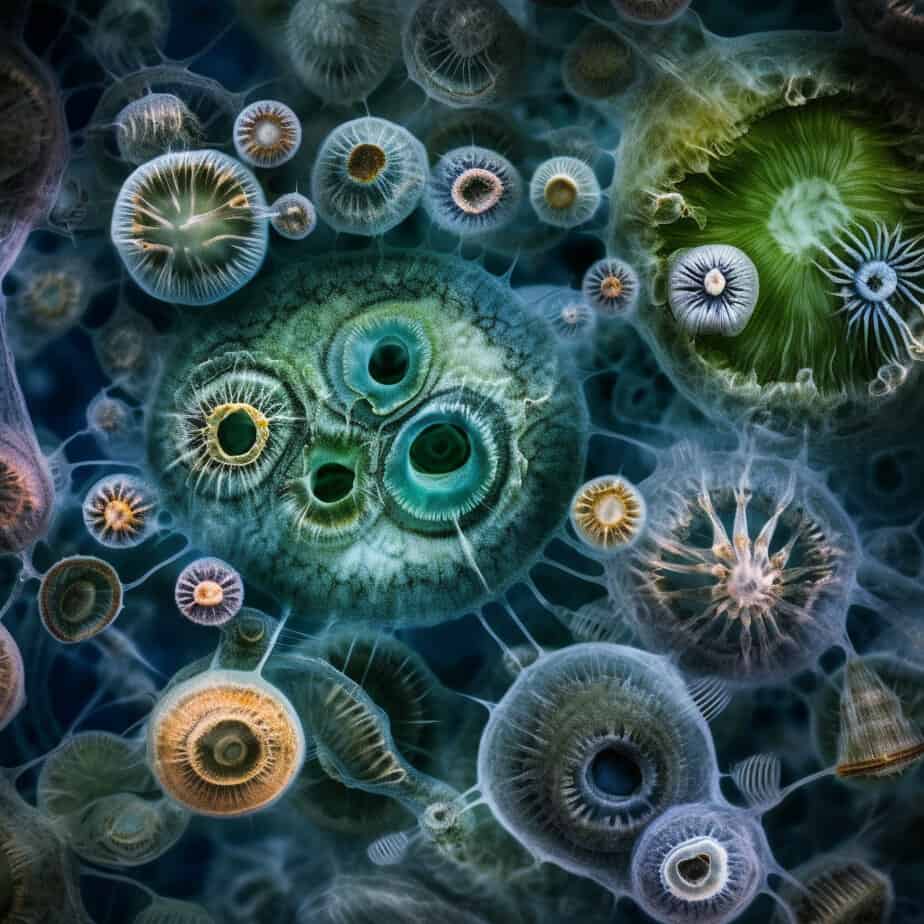
A. What Do Phytoplankton Need to Survive?
Phytoplankton, the microscopic photosynthetic organisms that play a crucial role in aquatic ecosystems, have a fascinating lifespan. To understand how they survive, it’s important to delve into their basic requirements.
-
Sunlight: Like all plants, phytoplankton rely on sunlight for photosynthesis, the process through which they convert carbon dioxide and nutrients into energy. Sunlight provides the necessary energy for this vital process.
-
Nutrients: Phytoplankton need an adequate supply of nutrients, such as nitrogen, phosphorus, and iron, to grow and thrive. These nutrients are essential for their metabolic processes and the production of chlorophyll, the pigment responsible for their green color.
-
Water: As aquatic organisms, phytoplankton require water to survive. They inhabit various bodies of water, including oceans, lakes, and rivers, where they can access the necessary resources for their growth and reproduction.
B. How Do Phytoplankton Survive in Various Conditions?
Phytoplankton have evolved various strategies to adapt and survive in different environmental conditions. Their ability to thrive in diverse habitats is crucial for maintaining the balance of marine ecosystems. Here are some ways they manage to survive:
-
Temperature Regulation: Different species of phytoplankton have different temperature preferences. Some thrive in colder waters, while others prefer warmer environments. This diversity allows phytoplankton to survive in a wide range of temperatures.
-
Salinity Tolerance: Phytoplankton can adapt to varying levels of salinity in the water. Some species can tolerate high salinity levels, while others thrive in brackish or freshwater environments. This adaptability enables them to survive in different aquatic habitats.
-
Buoyancy Control: Phytoplankton have the ability to regulate their buoyancy, allowing them to stay suspended in the water column where they can access sunlight for photosynthesis. They can adjust their internal gas vesicles to control their position in the water, ensuring optimal exposure to light.
C. Strategies to Keep Phytoplankton Alive
To ensure their survival, phytoplankton employ various strategies to overcome challenges and maintain their population. These strategies contribute to their overall resilience and ability to persist in changing environments. Here are a few notable strategies:
-
Rapid Reproduction: Phytoplankton have a short life cycle, which allows them to reproduce quickly and in large numbers. This rapid reproduction helps them compensate for losses due to predation, nutrient limitations, or unfavorable conditions.
-
Formation of Blooms: Under favorable conditions, phytoplankton can undergo rapid growth and form dense populations known as “blooms.” These blooms can be visible to the naked eye and have a significant impact on the surrounding ecosystem. Blooms provide phytoplankton with a competitive advantage, as they can outcompete other organisms for resources.
-
Resting Stages: Some phytoplankton species have the ability to enter resting stages, such as cysts or spores, when conditions become unfavorable. These resting stages can remain dormant for extended periods, allowing the phytoplankton to survive until conditions improve.
In conclusion, the lifespan of phytoplankton is influenced by their ability to meet their basic needs, adapt to various environmental conditions, and employ survival strategies. Their importance in marine ecosystems cannot be overstated, as they form the foundation of the oceanic food chain and contribute significantly to global carbon cycling. Understanding their survival mechanisms is crucial for comprehending the intricate dynamics of aquatic ecosystems and the potential impacts of climate change.
The Significance of Phytoplankton for Life on Earth
A. Why are Phytoplankton So Important?
Phytoplankton, the microscopic photosynthetic organisms that inhabit aquatic ecosystems, play a crucial role in sustaining life on Earth. Despite their small size, these tiny organisms have a big impact on the planet’s overall health and well-being. Here’s why phytoplankton are so important:
-
Primary Producers: Phytoplankton are primary producers, meaning they convert sunlight, carbon dioxide, and nutrients into organic matter through the process of photosynthesis. They are essentially the foundation of the oceanic food chain, providing sustenance for countless other organisms.
-
Oxygen Production: Through photosynthesis, phytoplankton release oxygen into the atmosphere. In fact, they are responsible for producing about half of the world’s oxygen, making them vital for the survival of terrestrial organisms, including humans.
-
Carbon Sink: Phytoplankton also play a crucial role in the carbon cycle. They absorb carbon dioxide from the atmosphere and incorporate it into their cells. When they die, they sink to the ocean floor, effectively sequestering carbon for long periods of time.
-
Climate Regulation: The presence of phytoplankton helps regulate the Earth’s climate. They absorb heat from the sun, reducing the amount of solar radiation that reaches the ocean’s surface. This helps to cool the planet and mitigate the effects of global warming.
B. The Role of Phytoplankton in the Earth’s Ecosystem
Phytoplankton are not only important for their role as primary producers and oxygen producers, but they also have a significant impact on the Earth’s ecosystem. Here’s a closer look at their role:
-
Food Source: Phytoplankton serve as a vital food source for a wide range of organisms, including zooplankton, small fish, and even large marine mammals. Their abundance and productivity directly influence the health and abundance of higher trophic levels in the oceanic food chain.
-
Biodiversity Support: Phytoplankton support a diverse array of marine life. Their high productivity and availability provide the necessary energy and nutrients for the survival and growth of various species, contributing to the overall biodiversity of marine ecosystems.
-
Nutrient Cycling: Phytoplankton play a crucial role in nutrient cycling within aquatic ecosystems. They take up essential nutrients, such as nitrogen and phosphorus, from the water, and when they die, these nutrients are released back into the environment, fueling the growth of other organisms.
-
Habitat Formation: Phytoplankton, particularly diatoms, form intricate and delicate structures that provide habitats for other organisms. These structures, known as diatomaceous earth, create a favorable environment for a diverse range of microorganisms and invertebrates.
C. What Would Happen if Phytoplankton Were Completely Destroyed?
The consequences of the complete destruction of phytoplankton would be catastrophic for life on Earth. Here’s what could happen:
-
Oxygen Depletion: With phytoplankton gone, the primary source of oxygen production would be eliminated. This would lead to a significant decrease in atmospheric oxygen levels, making it difficult for terrestrial organisms to survive.
-
Collapse of the Food Chain: Phytoplankton form the base of the oceanic food chain. Without their presence, zooplankton, fish, and other marine organisms that rely on phytoplankton as a food source would face a severe decline in population, leading to a collapse of the entire ecosystem.
-
Imbalance in Carbon Cycle: Phytoplankton play a crucial role in absorbing carbon dioxide from the atmosphere. Without them, the levels of atmospheric carbon dioxide would increase significantly, exacerbating the effects of global warming and climate change.
-
Loss of Biodiversity: The loss of phytoplankton would have a cascading effect on the biodiversity of marine ecosystems. Many species that depend on phytoplankton for food or habitat would struggle to survive, leading to a decline in overall biodiversity.
In conclusion, phytoplankton are not only essential for the health and balance of aquatic ecosystems but also have a profound impact on the entire planet. Their role as primary producers, oxygen producers, and carbon sinks make them vital for sustaining life on Earth. It is crucial that we recognize the significance of phytoplankton and take steps to protect and preserve their habitats to ensure a healthy and thriving planet for future generations.
The Decline of Phytoplankton: Causes and Consequences
A. Why is Phytoplankton Decreasing?
Phytoplankton, the microscopic photosynthetic organisms that form the foundation of aquatic ecosystems, play a crucial role in maintaining the health and balance of our oceans. However, in recent years, there has been a noticeable decline in phytoplankton populations worldwide. This decline is a cause for concern as it can have far-reaching consequences for marine life and the overall health of our planet.
There are several factors contributing to the decrease in phytoplankton populations. One significant factor is the changing climate. As global temperatures rise, the oceans are becoming warmer, leading to changes in ocean currents and nutrient availability. Phytoplankton rely on nutrients such as nitrogen, phosphorus, and iron to grow and thrive. However, with changing ocean conditions, these essential nutrients are becoming less available in certain regions, limiting phytoplankton growth.
Another factor contributing to the decline of phytoplankton is the increased acidity of the oceans. As carbon dioxide levels rise due to human activities, the oceans absorb a significant portion of this excess carbon dioxide, leading to ocean acidification. This acidification can negatively impact the growth and survival of phytoplankton, as well as other marine organisms that rely on them for food.
Human activities, such as pollution and overfishing, also play a role in the decline of phytoplankton. Pollution from agricultural runoff and industrial waste can introduce harmful chemicals and toxins into the water, affecting the health and growth of phytoplankton. Overfishing can disrupt the delicate balance of the oceanic food chain, leading to a decrease in the availability of nutrients for phytoplankton.
B. What Kills Phytoplankton?
Phytoplankton face various threats that can lead to their mortality. One significant factor is the competition for resources. As phytoplankton populations increase, they compete for limited nutrients and sunlight. This competition can result in the death of weaker individuals who are unable to access the necessary resources for survival.
Predation is another factor that can kill phytoplankton. Zooplankton, small animal-like organisms, feed on phytoplankton as their primary source of food. While zooplankton play an essential role in the oceanic food chain, their feeding activities can lead to the mortality of phytoplankton. However, it is important to note that this predation also helps to regulate phytoplankton populations and prevent excessive growth.
Environmental factors such as changes in temperature, salinity, and light availability can also impact phytoplankton mortality. Drastic changes in these factors can stress phytoplankton, making them more susceptible to disease and death. Additionally, harmful algal blooms, which occur when certain species of phytoplankton grow rapidly and produce toxins, can lead to the mortality of other phytoplankton species.
C. The Impact of Phytoplankton Decline on Ocean Life
The decline of phytoplankton can have significant consequences for ocean life and the overall health of our planet. Phytoplankton are the primary producers in the ocean, meaning they convert sunlight and nutrients into organic matter through photosynthesis. This organic matter forms the base of the oceanic food chain, providing food for zooplankton, fish, marine mammals, and other organisms.
A decrease in phytoplankton populations can disrupt the entire oceanic food chain. With fewer phytoplankton, there is less food available for zooplankton, which in turn affects the populations of higher trophic levels. This can lead to a decline in fish stocks, impacting both commercial and recreational fisheries. Marine mammals, such as whales and dolphins, also rely on phytoplankton as a food source, and a decline in phytoplankton can have detrimental effects on their populations as well.
Furthermore, phytoplankton play a crucial role in the global carbon cycle. Through photosynthesis, they absorb carbon dioxide from the atmosphere and release oxygen, helping to regulate the Earth’s climate. A decrease in phytoplankton populations can result in less carbon dioxide being absorbed from the atmosphere, leading to increased greenhouse gas levels and contributing to global warming.
In conclusion, the decline of phytoplankton is a complex issue with multiple causes and far-reaching consequences. It is essential to address the factors contributing to their decline, such as climate change, pollution, and overfishing, to ensure the health and balance of our oceans. Protecting and preserving phytoplankton populations is crucial not only for the survival of marine life but also for the overall health of our planet.
Optimal Growing Conditions for Phytoplankton
A. Where and When are Conditions Optimal for Phytoplankton Growth?
Phytoplankton, the microscopic photosynthetic organisms that form the foundation of aquatic ecosystems, thrive under specific environmental conditions. These conditions include factors such as sunlight, nutrient availability, temperature, and water movement. Let’s explore where and when these conditions are optimal for phytoplankton growth.
-
Sunlight: Phytoplankton require sunlight for photosynthesis, the process through which they convert carbon dioxide and nutrients into organic matter. As such, they are most abundant in areas where sunlight penetrates the water column, such as the upper layers of the ocean or freshwater bodies.
-
Nutrient Availability: Nutrients like nitrogen, phosphorus, and iron are essential for phytoplankton growth. They obtain these nutrients from the surrounding water, and their availability plays a crucial role in determining the abundance and diversity of phytoplankton species. Coastal areas, where nutrient-rich waters from rivers and upwelling bring an influx of nutrients, often support high phytoplankton productivity.
-
Temperature: Phytoplankton have specific temperature preferences, with different species thriving in different temperature ranges. Generally, warmer temperatures enhance phytoplankton growth rates, while colder temperatures can limit their growth. However, extreme temperatures can also be detrimental to phytoplankton, leading to reduced growth or even mortality.
-
Water Movement: Phytoplankton require a certain degree of water movement to disperse and access nutrients. Areas with strong currents or mixing, such as upwelling zones or regions influenced by tides, can create favorable conditions for phytoplankton growth. Conversely, stagnant or stratified waters may limit their growth.
B. How Long Can You Store Phytoplankton?
Phytoplankton are living organisms, and their lifespan can vary depending on various factors. While it is not practical to store phytoplankton for extended periods, researchers and scientists can maintain phytoplankton cultures in controlled laboratory conditions for shorter durations.
-
Microalgae Lifespan: Microalgae, a group that includes many phytoplankton species, can typically survive for several weeks to a few months under optimal laboratory conditions. However, their lifespan may be significantly shorter in natural environments due to various factors like predation, competition, and environmental fluctuations.
-
Phytoplankton Species: Different phytoplankton species have varying lifespans. Some species, like diatoms, can have relatively longer lifespans, while others, such as dinoflagellates, may have shorter lifespans. The lifespan of phytoplankton species is influenced by their specific physiological characteristics and ecological niche.
-
Phytoplankton Reproduction: Phytoplankton reproduce through various mechanisms, including asexual reproduction (cell division) and sexual reproduction (fusion of gametes). The frequency and efficiency of reproduction can affect their lifespan. Rapid reproduction can lead to shorter individual lifespans but can also contribute to the overall persistence and abundance of phytoplankton populations.
C. The Effect of Seasonal Changes on Phytoplankton Lifespan
Seasonal changes play a crucial role in shaping the lifespan of phytoplankton. These changes include variations in temperature, light availability, nutrient availability, and the presence of grazers or predators. Let’s explore how seasonal changes impact the lifespan of phytoplankton.
-
Temperature and Light: Seasonal variations in temperature and sunlight influence the growth and reproduction rates of phytoplankton. Warmer temperatures and increased sunlight during spring and summer can promote phytoplankton growth and lead to blooms. In contrast, colder temperatures and reduced sunlight during winter can limit their growth and decrease their lifespan.
-
Nutrient Availability: Nutrient availability can fluctuate seasonally, impacting phytoplankton lifespan. In some regions, nutrient-rich upwelling events during certain seasons can fuel phytoplankton growth and prolong their lifespan. Conversely, nutrient depletion during other seasons can lead to reduced growth and shorter lifespans.
-
Grazers and Predators: Seasonal changes can also affect the abundance and activity of grazers and predators that feed on phytoplankton. Grazers like zooplankton can control phytoplankton populations by consuming them. The presence or absence of grazers can influence phytoplankton lifespan, with reduced grazing pressure potentially allowing for longer individual lifespans.
In conclusion, optimal growing conditions for phytoplankton include factors such as sunlight, nutrient availability, temperature, and water movement. Phytoplankton can be stored for shorter durations under controlled laboratory conditions, with their lifespan varying depending on factors like species and reproduction rates. Seasonal changes, including variations in temperature, light, nutrient availability, and predation pressure, can significantly impact the lifespan of phytoplankton. Understanding these factors is crucial for studying phytoplankton ecology and their role in marine and freshwater ecosystems. Conclusion
In conclusion, the lifespan of phytoplankton is a fascinating and crucial aspect of their existence. These microscopic organisms play a vital role in the Earth’s ecosystems, serving as the foundation of the marine food web and contributing to the global carbon cycle. The lifespan of phytoplankton can vary greatly depending on various factors such as species, environmental conditions, and nutrient availability. Some species may only live for a few days, while others can survive for several weeks or even months. Understanding the lifespan of phytoplankton is essential for studying their population dynamics, ecological interactions, and the overall health of marine ecosystems. Continued research in this field will help us gain further insights into the intricate workings of these tiny but mighty organisms and their impact on the planet.
Frequently Asked Questions
What is the life cycle of phytoplankton?
The life cycle of phytoplankton involves several stages – resting, growth, maturity, and reproduction. These photosynthetic organisms reproduce rapidly under optimal conditions of sunlight, temperature, and nutrient availability. They can reproduce asexually, creating identical copies of themselves, or sexually, combining genetic material from two parents.
How long do phytoplankton live?
The lifespan of phytoplankton varies greatly depending on the species and environmental conditions. Some species can live for a few days, while others can survive for several weeks. The phytoplankton growth rate and mortality also play a significant role in determining their lifespan.
Where do phytoplankton grow?
Phytoplankton primarily grow in the euphotic zone of aquatic ecosystems, which is the top layer of water where sunlight can penetrate. This allows them to perform photosynthesis. They are found in both freshwater and marine environments, including oceans and lakes.
Why are phytoplankton so important for life on Earth?
Phytoplankton are vital for life on Earth as they produce about half of the world’s oxygen through photosynthesis. They also form the base of the oceanic food chain, providing food for a wide range of sea creatures. Additionally, they play a crucial role in the carbon cycle, absorbing carbon dioxide from the atmosphere.
How long can you store phytoplankton?
Phytoplankton can be stored for several weeks to a few months if kept in a refrigerator at a temperature between 2°C and 8°C. However, the viability and nutritional value of phytoplankton may decrease over time.
What do phytoplankton need to survive?
Phytoplankton need sunlight, carbon dioxide, and nutrients such as nitrogen, phosphorus, and other trace elements to survive. These requirements are met in the euphotic zone of aquatic environments.
What kills phytoplankton?
Phytoplankton can be killed by several factors, including lack of sunlight or nutrients, changes in water temperature, predation by zooplankton, and exposure to toxins or pollutants. Climate change and global warming can also negatively impact phytoplankton populations.
How to keep phytoplankton alive?
To keep phytoplankton alive, they need a stable environment with access to light for photosynthesis and nutrients for growth. In a laboratory or aquaculture setting, this can be achieved through controlled lighting, temperature, and nutrient supplementation.
Where is phytoplankton found in the ocean?
Phytoplankton are found throughout the world’s oceans, primarily in the euphotic zone where sunlight penetrates the water. They are most abundant in areas with high nutrient availability, such as upwelling zones and coastal areas.
What would happen if phytoplankton in an ocean is completely destroyed?
If phytoplankton were completely destroyed, it would disrupt the oceanic food chain and significantly reduce oxygen production, affecting all life on Earth. It would also disrupt the carbon cycle, potentially exacerbating global warming.


